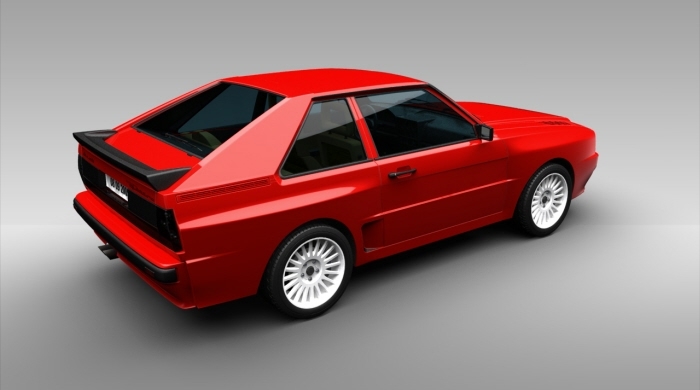Test: HIS Radeon HD4770 i CrossFire
Grafikkort, AMD/ATI d. 04. februar. 2010, skrevet af WinterSilence 11 Kommentarer. Vist: 9672 gange.
Korrekturlæser:
Billed behandling:
Oversættelse:
Pristjek på http://www.pricerunner.dk
Produkt udlånt af: AMD
DK distributør: AMD
Billed behandling:
Oversættelse:
Pristjek på http://www.pricerunner.dk
Produkt udlånt af: AMD
DK distributør: AMD
#1
Du nævner ikke temperaturer eller OC potentiale overhovedet, det går jeg ud fra er et problem fordi:
Jeg har selv haft et 4770 sæt i CF, og når kortene er designet som vist i din artikel så ledes den varme luft dannet af kortene ikke ud gennem kortets bagende men bliver derimod inde i kabinettet.
Med CF giver det hurtig en så varm mobo temperatur at systemet grænser til det ustabile selv uden OC af nogen art.
I mit kabinet røg MB temperaturen op på de 80 grader ved belastning, UDEN OC. Og jeg har en corsair H50 samt 3 noctua kabinetblæsere af de nyeste kørende + en seperat MB chipset fan i et antec p183.
Derfor kan man meget hurtig blive meget skuffet hvis man køber 2x 4770 med ovenstående design for at OC, da man godt kan glemme alt om det.
Det er en yderst vigtig detalje i en anmeldelse som denne. Ved ikke om du ikke har forsøgt at måle temps eller overclocke men det virker en smule mærkeligt du slet ikke har det med.
Svaret blev redigeret 2 gange, sidst af sortiarius d. 04-02-2010 18:03:06.
Jeg har selv haft et 4770 sæt i CF, og når kortene er designet som vist i din artikel så ledes den varme luft dannet af kortene ikke ud gennem kortets bagende men bliver derimod inde i kabinettet.
Med CF giver det hurtig en så varm mobo temperatur at systemet grænser til det ustabile selv uden OC af nogen art.
I mit kabinet røg MB temperaturen op på de 80 grader ved belastning, UDEN OC. Og jeg har en corsair H50 samt 3 noctua kabinetblæsere af de nyeste kørende + en seperat MB chipset fan i et antec p183.
Derfor kan man meget hurtig blive meget skuffet hvis man køber 2x 4770 med ovenstående design for at OC, da man godt kan glemme alt om det.
Det er en yderst vigtig detalje i en anmeldelse som denne. Ved ikke om du ikke har forsøgt at måle temps eller overclocke men det virker en smule mærkeligt du slet ikke har det med.
Svaret blev redigeret 2 gange, sidst af sortiarius d. 04-02-2010 18:03:06.
#2
#1
Nu er dette jo kun tilfældet ved dig 😉
Det er jo ikke sikkert at andre med forskellige setups har samme problemer.
Du kan jo bare spørger riska hvor godt de HD4770 grafikkort han havde clockede.
Nu er dette jo kun tilfældet ved dig 😉
Det er jo ikke sikkert at andre med forskellige setups har samme problemer.
Du kan jo bare spørger riska hvor godt de HD4770 grafikkort han havde clockede.
#3
Problemet ligger ved at du har to GPU'er ved siden af hinanden der generer varm luft i kabinettet UDEN det bliver blæst ud. Så får du en overordenlig varm luft i kabinettet, der specielt er kritisk for i forvejen varme x58 chipset.
Om det så er 85 eller 75 grader (afhængigt af om der bruges 1000kr på kabinetkøling eller midnre) er løsningen hamrende uheldig og yderst problematisk og bør nævnes. Personligt har jeg nu en mb temperatur på under 50grader nu med et 5970 kort (ellers samme setup) under load.
Og så kunne riska jo eventuelt skrive hvor godt han overclockede nu han har lavet en anmeldelse af produktet uden at nævne overclocking.
Problemet er sikkert mindre på P55 chipset men det bør helt sikkert nævnes.
Svaret blev redigeret 2 gange, sidst af sortiarius d. 04-02-2010 19:19:53.
Om det så er 85 eller 75 grader (afhængigt af om der bruges 1000kr på kabinetkøling eller midnre) er løsningen hamrende uheldig og yderst problematisk og bør nævnes. Personligt har jeg nu en mb temperatur på under 50grader nu med et 5970 kort (ellers samme setup) under load.
Og så kunne riska jo eventuelt skrive hvor godt han overclockede nu han har lavet en anmeldelse af produktet uden at nævne overclocking.
Problemet er sikkert mindre på P55 chipset men det bør helt sikkert nævnes.
Svaret blev redigeret 2 gange, sidst af sortiarius d. 04-02-2010 19:19:53.
#4
#3 det er ikke riska der har skrevet artiklen men wintersilence. 😉
#5
jammen det er da fuldstændig ligegyldigt for konteksten, det er ikke en anklage mod ham, men et ret essentielt supplement til hans artikel for dem der overvejer at lave sådan et setup.
#6
#1 Jeg vil give dig ret, det er da en yderst væsentlig oplysning, specielt fordi 4770 i crossfire kører super, uden larm og varme, bare det er med den køler som sender luften ud af kabinettet. Hvilket selvfølgelig var den model som riska havde.
#7
http://www.hwbot.org/community...
http://www.hwbot.org/community...
http://www.hwbot.org/community...
de her scores er lavet med alle fire kort på vand og cpu på ln2 offcource men det er rigtigt at de modeller med den der åndsvage ægge køler ligesom den de smider på HD5750-5770 kortne ikke er en skid værd i et lukket kabinet hvis man skal køre med mere end et kort jeg ville tro at hvis man kørte med 4 kort med den køler ville ens kabinet temp stige til over 60c uden problemer
http://www.hwbot.org/community...
http://www.hwbot.org/community...
de her scores er lavet med alle fire kort på vand og cpu på ln2 offcource men det er rigtigt at de modeller med den der åndsvage ægge køler ligesom den de smider på HD5750-5770 kortne ikke er en skid værd i et lukket kabinet hvis man skal køre med mere end et kort jeg ville tro at hvis man kørte med 4 kort med den køler ville ens kabinet temp stige til over 60c uden problemer
Sortarius:
Jeg ville blive ENORMT glad, hvis du i min artikel bider mærke i, at sektionen design og OC er kraftigt udeladt, da kortene har VIDT forskellige køledesignløsninger monteret.
Jeg foretrækker som tekniker og tester og af pers. erfaring løsningen med fuldt dækkende radialblæsere, der puster luften UD af kabinettet, som på AMD-pre release refrencekortet der indgår i denne test og som på de HD4770-kort XFX har udbudt til salg på markedet (som de eneste jeg har kunnet finde på markedet pt.).
Da HiS-kortet er tilgået os til CrossFiretest, så er dette IKKE testet med OC "stand-alone" - og ej heller har jeg målt temperaturer med kabinetsiden på, eller ikke da jeg udelukkende har udført CrossFiretesten.
Derfor vil jeg mene, at dine erfaringer skal ses af adnre brugere, som et supplement til min artikel/test/anmeldelse for hvordan et non-radialblæser setup virker/performer i et lukket kabinet.
Og sådanne kommentarer der supplerer en artikel er yderst velkomne, da de viser hvordan givent kort performer i givent setup 🙂
Følgende kommentar skal IKKE ses, som en holdning fra HwT af for, om radial fulddækkende køleløsninger er det "eneste" rigtige, eller ej - da producenterne gennem deres valg af komponenter og BIOS-optimeringer kan levere løsninger der "leverer varen", uden disse benytter AMD/ATi's referencedesign, hvilket jo er meget set hos, bl.a. HiS, Sapphire og Asus med eks. vis iCooler eller andre tilpassede køleløsninger.
Jeg foretrækker personligt radialblæserdesignet, da jeg har en personlig, samt test-PC med monterede sideplader. Og det fordi jeg ønsker støjsvage løsninger, samt korrekte temp. målinger, hvilket altid fremgår af mine tests/anmeldelser 🙂
Svaret blev redigeret 1 gang, sidst af WinterSilence d. 05-02-2010 02:04:13.
Jeg ville blive ENORMT glad, hvis du i min artikel bider mærke i, at sektionen design og OC er kraftigt udeladt, da kortene har VIDT forskellige køledesignløsninger monteret.
Jeg foretrækker som tekniker og tester og af pers. erfaring løsningen med fuldt dækkende radialblæsere, der puster luften UD af kabinettet, som på AMD-pre release refrencekortet der indgår i denne test og som på de HD4770-kort XFX har udbudt til salg på markedet (som de eneste jeg har kunnet finde på markedet pt.).
Da HiS-kortet er tilgået os til CrossFiretest, så er dette IKKE testet med OC "stand-alone" - og ej heller har jeg målt temperaturer med kabinetsiden på, eller ikke da jeg udelukkende har udført CrossFiretesten.
Derfor vil jeg mene, at dine erfaringer skal ses af adnre brugere, som et supplement til min artikel/test/anmeldelse for hvordan et non-radialblæser setup virker/performer i et lukket kabinet.
Og sådanne kommentarer der supplerer en artikel er yderst velkomne, da de viser hvordan givent kort performer i givent setup 🙂
Følgende kommentar skal IKKE ses, som en holdning fra HwT af for, om radial fulddækkende køleløsninger er det "eneste" rigtige, eller ej - da producenterne gennem deres valg af komponenter og BIOS-optimeringer kan levere løsninger der "leverer varen", uden disse benytter AMD/ATi's referencedesign, hvilket jo er meget set hos, bl.a. HiS, Sapphire og Asus med eks. vis iCooler eller andre tilpassede køleløsninger.
Jeg foretrækker personligt radialblæserdesignet, da jeg har en personlig, samt test-PC med monterede sideplader. Og det fordi jeg ønsker støjsvage løsninger, samt korrekte temp. målinger, hvilket altid fremgår af mine tests/anmeldelser 🙂
Svaret blev redigeret 1 gang, sidst af WinterSilence d. 05-02-2010 02:04:13.
#9
Du har selvfølgelig ret i at OC i CF af to forskellige kort måske godt kunne give et misvisende billede. Det samme kan man sige om mb temps når det nu kun er det ene kort der deponerer xxx grader celsius i kabinettet.
Så lad mig omformulere: Synes min erfaring kunne være et godt supplement til folk der gerne vil 4770CF'e og nu overvejede HIS som dual løsning.
Man undres bare over hvorfor man går væk fra det oprindelige design hvor luften blæses ud.
Det var også 2 HIS kort jeg havde, og selvom jeg godt vidste det kunne være et problem før jeg købte det, tenderede jeg til at tro at mit chipset måske var defekt fordi temperaturene blev så overordenligt høje.
Således er temperaturen i motherboardet (og dermed også tildels CPU/ram og resten af kabinettet) væsentlig lavere ved et 5970 crossfire setup med 4 gpu'er, end ved 4770CF setup.
Så hvis man vil lave 4770CF som jeg synes er en udmærket løsning så skal man lige sørge for man får de rigtige modeller 🙂
Svaret blev redigeret 2 gange, sidst af sortiarius d. 05-02-2010 08:49:35.
Så lad mig omformulere: Synes min erfaring kunne være et godt supplement til folk der gerne vil 4770CF'e og nu overvejede HIS som dual løsning.
Man undres bare over hvorfor man går væk fra det oprindelige design hvor luften blæses ud.
Det var også 2 HIS kort jeg havde, og selvom jeg godt vidste det kunne være et problem før jeg købte det, tenderede jeg til at tro at mit chipset måske var defekt fordi temperaturene blev så overordenligt høje.
Således er temperaturen i motherboardet (og dermed også tildels CPU/ram og resten af kabinettet) væsentlig lavere ved et 5970 crossfire setup med 4 gpu'er, end ved 4770CF setup.
Så hvis man vil lave 4770CF som jeg synes er en udmærket løsning så skal man lige sørge for man får de rigtige modeller 🙂
Svaret blev redigeret 2 gange, sidst af sortiarius d. 05-02-2010 08:49:35.
#10
Hihhi, hvem bruger kabinetter 😀
#11
Men det er faktisk lidt vild at man for 700-800kr (brugtpris) Kan få et crossfiresetup der river alt rundt.!!








